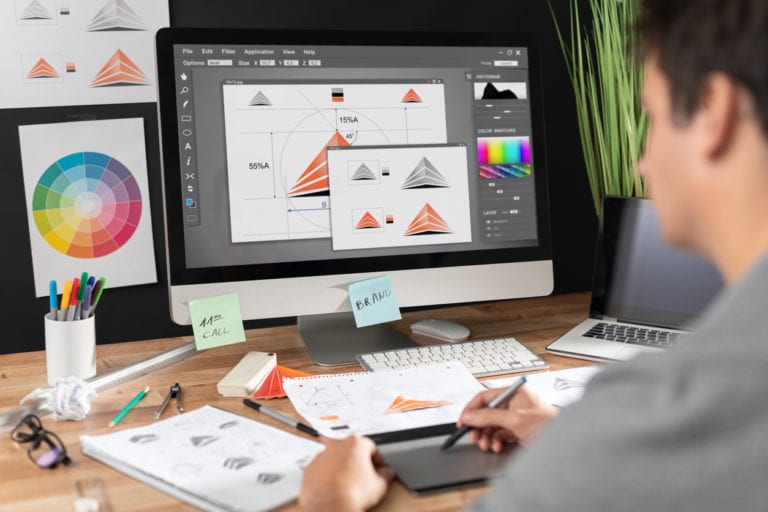Table Of Content

Back then, CAD systems were high-speed, standalone mainframes that were not user-friendly and were only used for very specific applications. CAD significantly reduces the time and effort required for design tasks compared to manual drafting. It offers features like copy-pasting, mirroring, and automated dimensioning, streamlining the design process. Modifications are also easier to make, as changes can be applied with a few clicks.
Types
The utilization of CAD spans across diverse industries, including architecture, engineering, manufacturing, and construction. Additionally, it finds widespread application in product design, automotive design, and film animation. Advancements in computing power, along with the development of new technologies such as cloud computing and virtual reality, are continuing to drive the evolution of CAD technology. As a result, CAD systems are becoming more accessible, user-friendly, and capable of handling increasingly complex design projects. Today, there are a wide variety of CAD systems available, ranging from simple 2D drawing programs to complex 3D modeling and simulation tools.
Who uses CAD?
Completely online, the program enables users to model, analyze, and design a wide range of structures. With smart repair model functionality, the program helps users identify and repair issues. Computer-aided design (CAD) is a crucial field in product engineering and the industrial sector. It allows engineers to develop, test, and optimize their design in a safe environment, without having to build expensive prototypes. CAD software also provides a documentation trail, records specifications, and enables collaboration between multiple disciplines and stakeholders in product manufacturing.
CAD software/tools
CAD enables designers to conceptualize, visualize, and analyze complex designs before production, streamlining the entire development process. A program that runs on Microsoft Windows, SolidWorks Premium has powerful 3D design capabilities. While it can be used to create 2D designs, the 3D-related tools are what make it so valuable for mechanical engineers and designers. In the 1970s and 1980s, CAD became more sophisticated as computers became more powerful and user-friendly. These programs offered a wider range of tools and features and allowed designers to create more detailed, interactive models of user interfaces. As a result, designers began to create better user experiences because they could test and validate design ideas more effectively.
What are the Different Types of Computer-Aided Design?
Design engineers may plan and create their work on a computer screen with CAD, print it, and save it for upcoming revisions. Because the machines were so expensive when CAD was first developed, it was not precisely a viable business option. Interior designers use CAD to optimize space, experiment with different layouts, and visualize the final look in 3D before the physical implementation begins. The CAD model becomes a valuable communication tool between architects, interior designers, and clients. The software allows them to create detailed and accurate architectural plans, 3D models, and blueprints.
Advantages of CAD
It helps users create designs both 2D and 3D designs to better visualize construction. By utilizing a CAD system, clothing manufacturers have significantly shortened production times. Additionally, CAD lets designers see clothing designs on virtual figures in various colors and shapes, saving time by reducing the need for later revisions to prototypes and samples. One of the best systems for helping with the design and production of dental treatment-related elements right now is CAD technology.
Coolest 3D Printed Robotics Projects (2024 Update)
Digital Innovations In Computer-Aided Design Software For Weaving - Textile World Magazine
Digital Innovations In Computer-Aided Design Software For Weaving.
Posted: Mon, 12 Feb 2024 08:00:00 GMT [source]
Furthermore, many CAD applications now offer advanced rendering and animation capabilities so engineers can better visualize their product designs. 4D BIM is a type of virtual construction engineering simulation incorporating time or schedule-related information for project management. Computer-Aided Design is a crucial technology used in various industries, including engineering, architecture, and fashion design.

Freeform or Sculpting CAD
Challenges in adopting CAD technology may include the initial cost of software and hardware, training requirements, and compatibility with existing design processes and systems. CAD tools have features such as 2D and 3D modeling, rendering, parametric design, simulation capabilities, assembly modeling, and data management functionalities. CAD software allows for improved collaboration among designers, engineers, and other stakeholders. Design teams can easily share designs and provide feedback, leading to more effective communication and collaboration. This also reduces the risk of miscommunication and errors, leading to better design outcomes.
Global Collaborative Product Definition Management (cPDM) Market Reaches $53.27 Billion in 2022, Expected to ... - GlobeNewswire
Global Collaborative Product Definition Management (cPDM) Market Reaches $53.27 Billion in 2022, Expected to ....
Posted: Mon, 18 Sep 2023 07:00:00 GMT [source]
The height of the item (i.e., thickness or depth) at each place is commonly depicted for objects of this type using a contour map. Yes, numerous educational institutions and software companies offer CAD certificate programs. These programs typically cover fundamental concepts, software tools, and real-world applications of CAD. Certifications can demonstrate a level of competency and professionalism in computer-aided design and are often favored by employers. CAD (computer-aided design) is a technology commonly used in design to create detailed, precise and interactive models of products. Stands for "Computer-Aided Design." CAD is the use of computers to create 2D and 3D designs.
Parametric design is a powerful feature that allows designers to create designs that can be easily modified and adapted for different purposes. By creating a series of parameters that define the design, designers can quickly make changes to the design without having to recreate it from scratch. This feature saves time and allows for greater flexibility in the design process.
3D CAD includes computer-aided manufacturing (CAM), which involves the actual manufacturing of three-dimensional objects. There are many types of CAD software out there, and while they all operate differently, all are based on geometry. Every CAD program has X (horizontal), Y (vertical), and Z (depth) coordinates which allow users to create 2D or 3D models. CAD programs typically use either vector-based graphics or raster graphics to represent drawings and models. Originally software for CAD systems was developed with computer languages such as Fortran, ALGOL but with the advancement of object-oriented programming methods this has radically changed.
CAD software can be used to create two-dimensional (2-D) drawings or three-dimensional (3-D) models. 2D/3D hybrid CAD software offers workflow flexibility and diversity by combining the strengths of 2D and 3D modeling methodologies. For businesses like architecture, in which both 2D drawings and 3D models are necessary for efficient communication and decision-making, this kind of computer-aided design is perfect. The goal of computer-aided design (CAD) is to replace manual drafting techniques with a more efficient way to create accurate and detailed design representations.

No comments:
Post a Comment